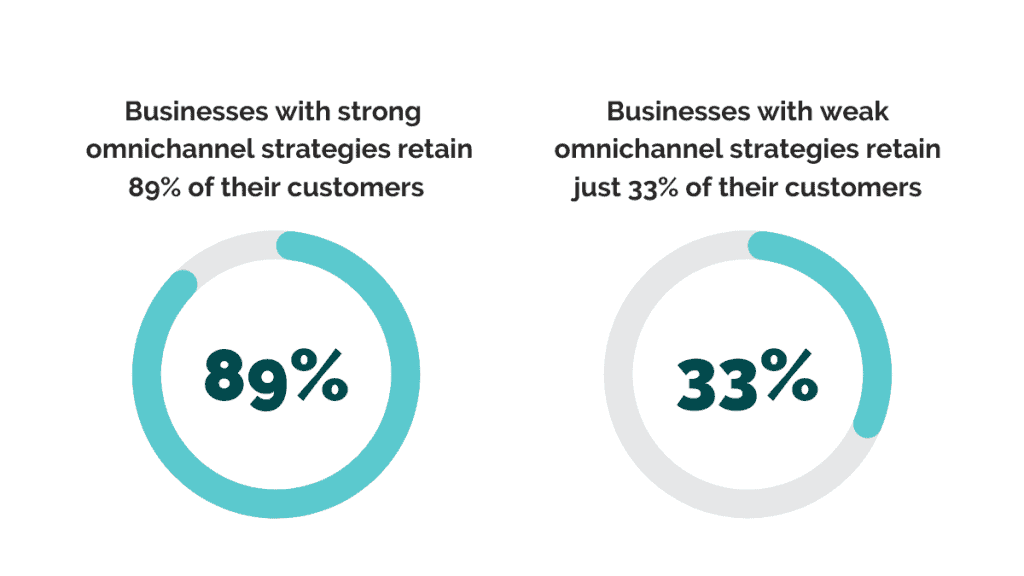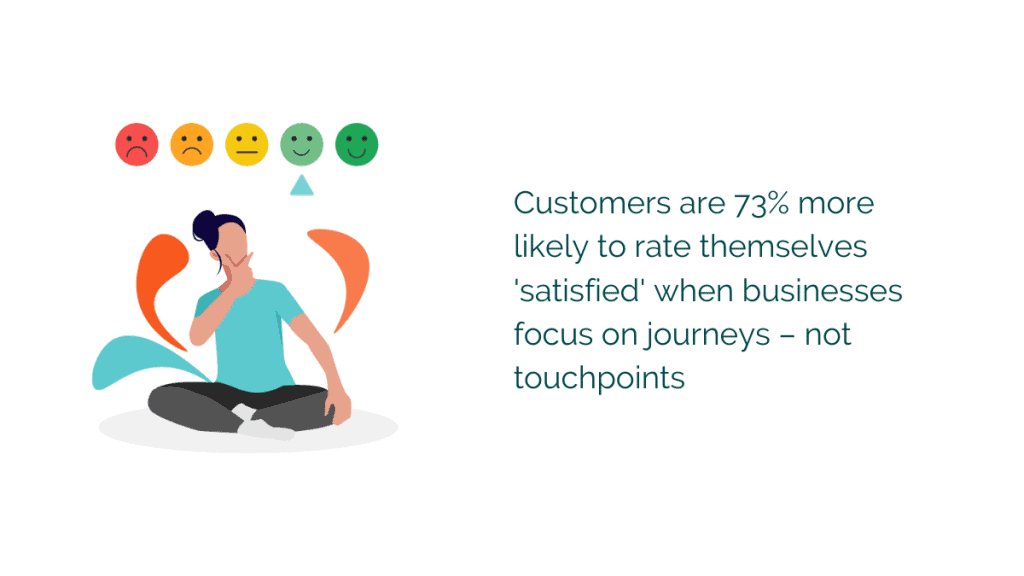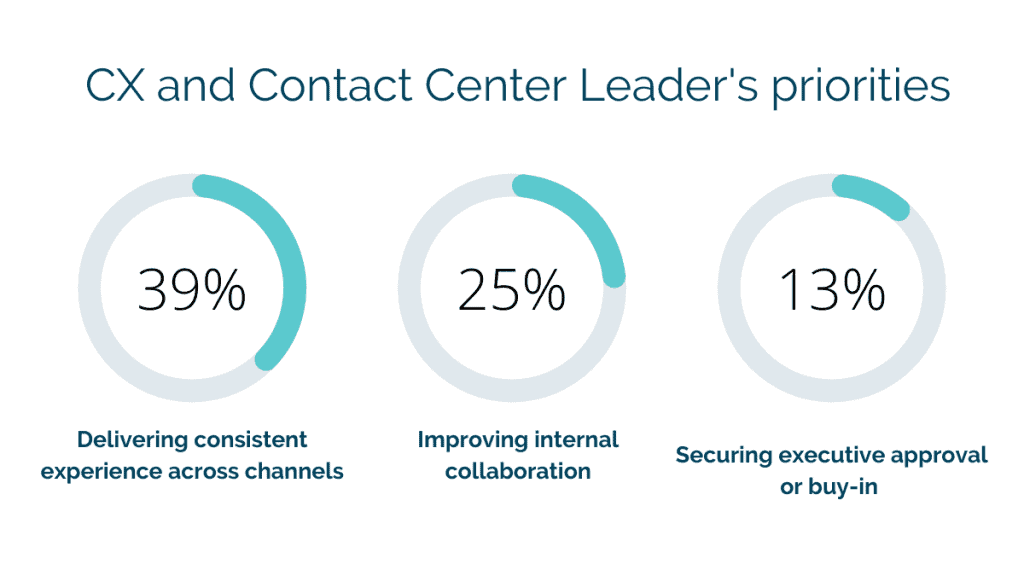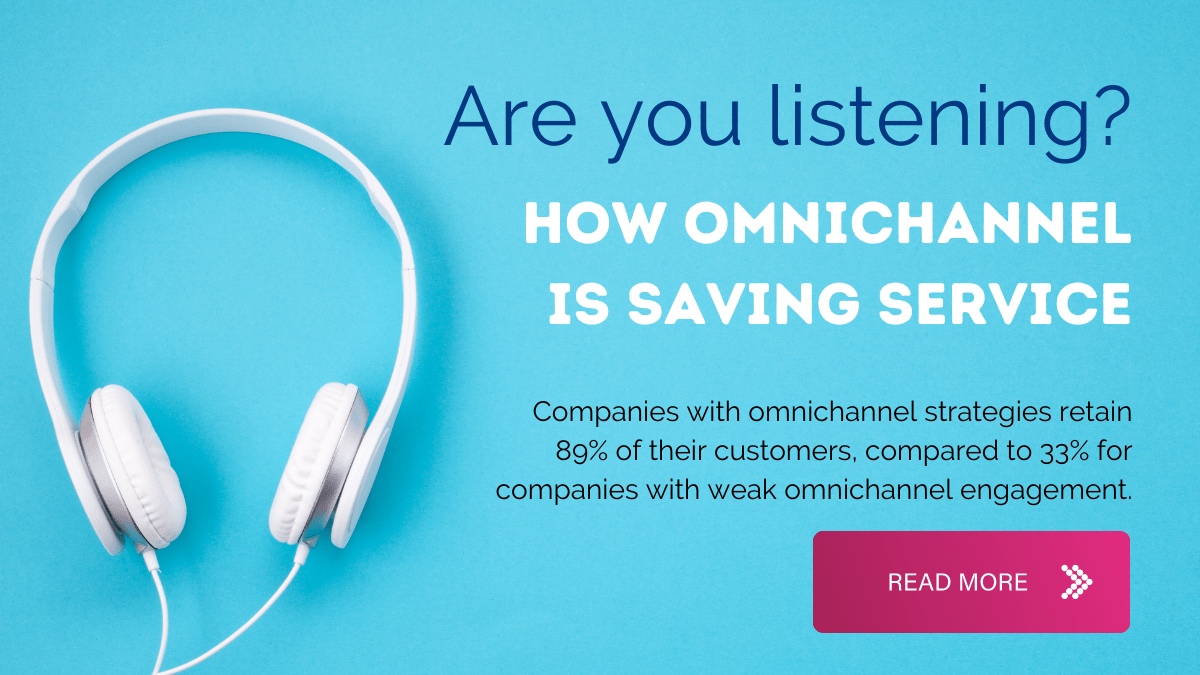True story: I was about to start an 18-hour multi-transfer plane journey when I noticed a suspicious transaction on my banking app.
I contacted the bank using the in-app messaging service while on the runway, alerting them to the issue.
When the first plane landed, I logged into my email to see a confirmation that the company was looking at the problem. I called them to ask for more details, and the rep explained the situation.
By the time my second flight landed, I had another email explaining that the problem was solved.
Why am I telling this story? Because it’s a great example of omnichannel service.

What is omnichannel service?
Omnichannel service is when your team provides customer support in multiple ways that are all deeply integrated. Customers get the same experience no matter which method they choose and which channel they used previously.
Consider the example in the introduction. I first contacted the bank’s support team via the app because I was using it when I noticed the problem.
The bank’s agents continued the conversation via email. When I called them, the rep had all the information about my problem at hand and could easily explain the issue.
The support experience took in three different methods, but each one was connected. The conversation continued seamlessly, and I didn’t need to explain myself on each new channel.
This highlights the features of omnichannel service.
It must:
- Allow customers to contact your team via the channels they choose.
- Enable seamless movement across various channels during a conversation.
- Provide reps with the same information on all channels in real-time.
If a system doesn’t allow the above three points, it may be a multichannel service rather than an omnichannel one.
Omnichannel service vs. multichannel service
Both omnichannel and multichannel services provide customers with various ways to contact your team. This could include phone, SMS, email, social, or online chat.
The difference is that in omnichannel service, the methods of communication are integrated and connected. You can move from one channel to the next without breaking conversation.
In multichannel service, each one exists separately or with only minimal integration. While your customers can contact you in various ways, the channels aren’t connected, leading to a disjointed experience.

Omnichannel support has significant benefits
Omnichannel service reduces frustration and removes customer support roadblocks. Customers love it because the experience surpasses their expectations, while you get the benefits of happier customers and more effective support.
Better customer experience
Omnichannel support helps you provide better customer experiences in several ways. First, customers can contact your team in a way that suits them.
They can call you when they’re out, email you when sat at their computer, or use in-app support when browsing on their phone.
And they know that whichever option they choose, they’ll get a consistent experience.
That’s because all your reps have access to the same information about their problem. A contact center agent is just as well-prepared to solve the issue as the person who answers the helpdesk tickets.
The experience while interacting with your team is better, too.
The customer doesn’t have to repeat themselves by explaining their problem every time they get passed to a different person.
And as reps have access to more information about the issue, they are more likely to solve the problem quickly. This is ultimately what customers want most.

Support teams work efficiently
Customer service agents spend a lot of time manually researching problems, which can be an ineffective use of time.
Omnichannel service helps by automatically providing agents with the information they need to solve customer problems.
They have instant access to a customer’s support history – whether or not they had previous contact with the specific rep. This means they can solve more problems in the same amount of time.
When a rep can’t solve a particular problem, deep integration means they can seamlessly transfer customers to a different department. Each one knows the issue the customer is facing as soon as they pick up the call.
Move conversations to less costly channels
Omnichannel service can help reduce support costs by enabling teams to move conversations to less costly channels.
Imagine a customer calls your team with a problem that they promise to look into. Once your team has solved the issue, you can confirm this with the customer via SMS or email rather than calling them back.
It is typically much cheaper to send an email than place an outbound call. Do this hundreds of times a day, and the savings will soon add up.
If you want to cut costs further, make sure self-service support is one of the channels you have available. Tools like chatbots, IVR, and knowledge bases allow customers to solve problems on their own without ever contacting your team.

Omnichannel service best practices
The benefits of omnichannel service are clear. But be sure to consider some of these best practices before you jump in and roll out a new customer experience.
Focus on the right channels, not all the channels
Providing an omnichannel experience doesn’t mean you have to be available on all the channels.
Instead, choose the best ones for your business. You could choose from:
- Voice and IVR
- SMS
- Messaging apps
- Chatbots
- Social media
When deciding, look at the types of service your customers expect and use. Voice is costly but often necessary. Social media is helpful, but certain demographics may be less likely to use these platforms for support.
If you’re already in business, creating an omnichannel experience may just be a case of connecting your existing channels on a deeper level, which you can do via an integration platform.
Choose an integration platform
Once you know the channels you’ll use, you need a platform that enables all these tools to work together seamlessly in the cloud.
You’ll need to be able to connect your contact center with your CRM, helpdesk, and reporting software, so reps have instant access to the tools they need. And this should all be done within a user-friendly platform that is easy for your team to get to grips with.
Train your people
An excellent omnichannel experience is only as good as the customer support team that uses it. Ensure all your reps are familiar with the various platforms and how to switch from one to another.
Or – even better – invest in tools that you can embed as widgets, and reduce the number of separate systems your agents need to use.
Use automation where possible
Automation plays a major role in an omnichannel experience, and you should use it wherever possible to take the strain off your team.
You can set up processes so your CRM instantly brings up customer information when calls are passed between reps. Or you can set up an IVR system that collects customer information before the caller connects to your team, so agents are well-prepared to answer their questions.





